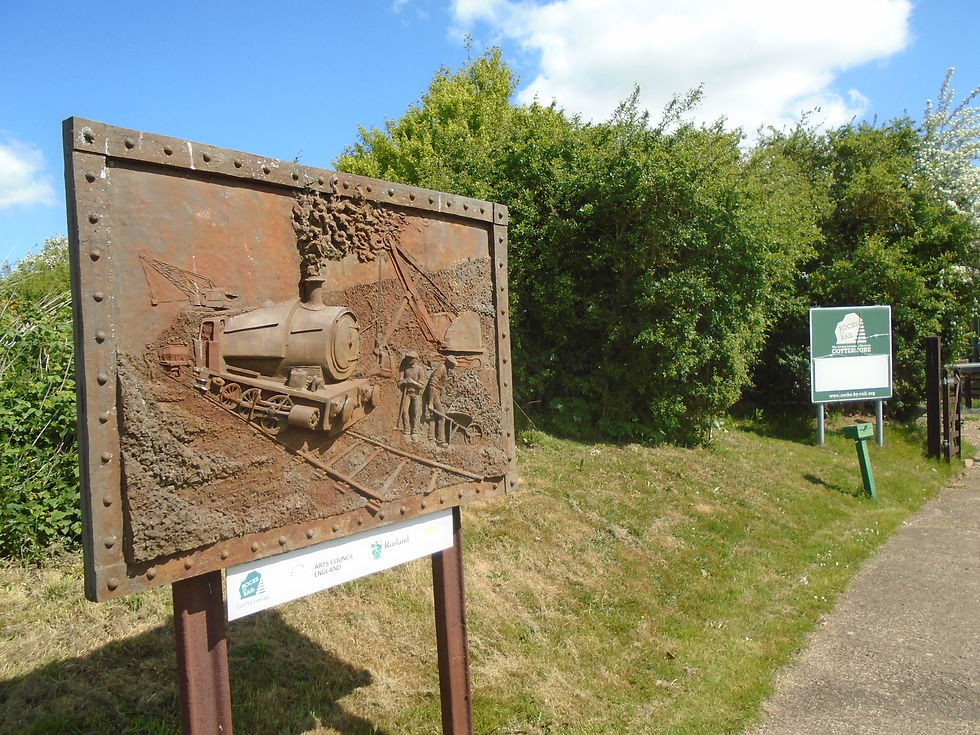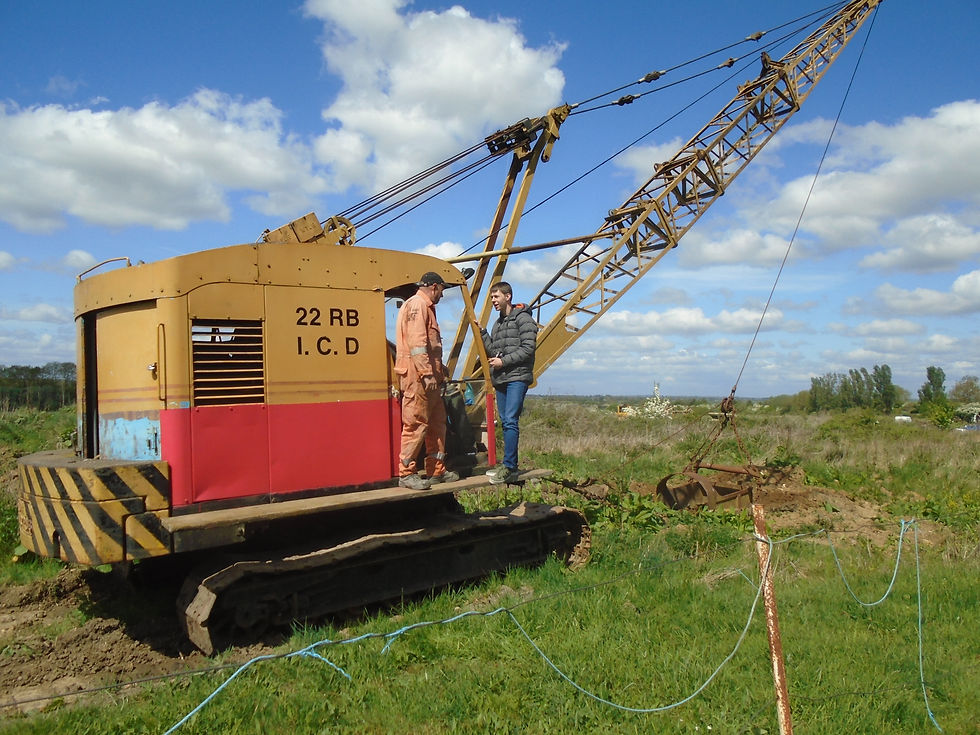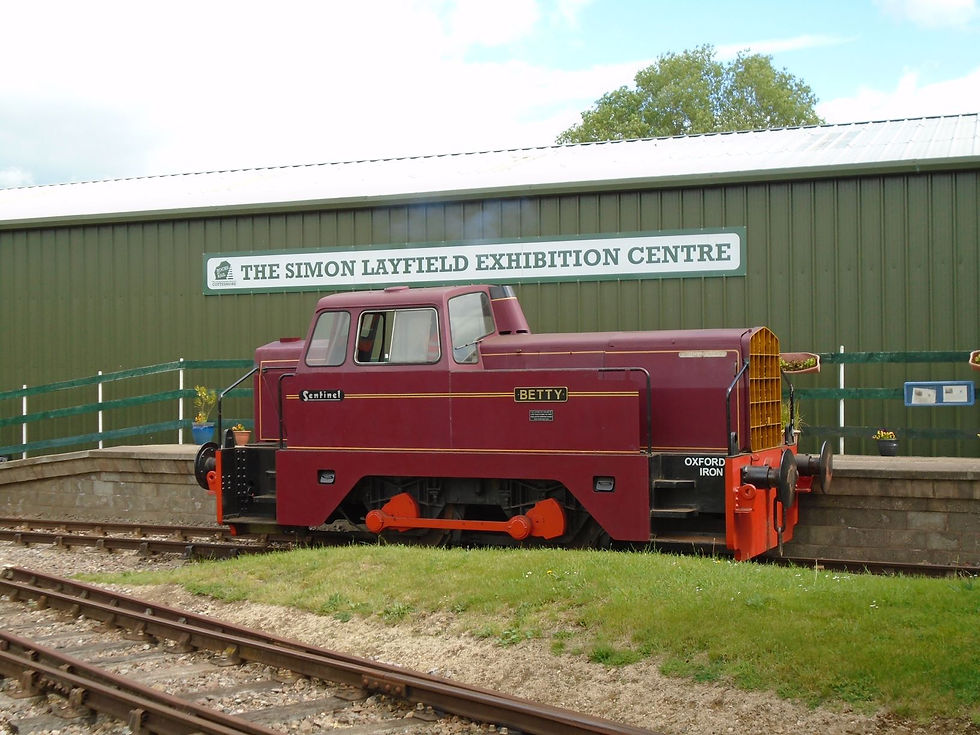Discover Rutland and Explore The Geodiversity of Rocks by Rail
- Wayne Munday
- May 10
- 4 min read
Updated: Sep 12
Sip back and discover Rutland and explore Rocks by Rail a community focused industrial heritage project aimed at preserving and promoting the UK’s local quarrying and railway history. It highlights over a century of ironstone quarrying, cement manufacturing and industrial railways in the East of England. The museum holds the UK’s only complete standard gauge railway collection linked to local quarry railways. Rocks by Rail serves as a hub for education, academic study and public engagement offering volunteering opportunities that foster traditional skills and celebrates regional industrial heritage.

Ironstone quarrying is an important part of Rutland’s industrial heritage and because, in the past, visitors were not encouraged to visit the working quarries for safety reasons, the history of local ironstone quarrying is not well known. The museum provides open day displays to keep this heritage alive for new generations to appreciate and enjoy.
Rocks by Rail is the trading name of Rutland Railway Museum and is entirely run by volunteers. The museum was first founded in 1980 and today occupies a 10 acre site on old ironstone railway sidings located near Cottesmore in Rutland. Here the museum’s volunteers have brought together the only comprehensive collection of railway locomotives and rollingstock related to quarry railways in the United Kingdom.
Iron Ore Mining and Production in Rutland and the East Midlands
Ironstone is a mineral-rich rock formed during the Aalenian Age between 174.7 - 170.9 million years ago during the Middle Jurassic Epoch. This was a time that experienced the breakup of Pangaea into Laurasia and Gondwana and marks the early formation of the Atlantic Ocean. The climate fluctuated between arid and humid conditions and the Earth experienced global warming, marine transgressions and notable cooling events like the Callovian Ice Age. In European lithostratigraphy, rocks from this period are known as the Dogger.
Ironstone has played a pivotal role in the UK’s industrial development particularly across the East Midlands. The key local ironstone, “Northampton Sand,” extends from the River Humber to Corby forming part of the Lincoln Edge alongside Lincolnshire Limestone. Historical evidence shows ironworking activity dating back to Roman times continuing into the medieval period and peaking in the 17th century before declining due to competition from Swedish ore imports.
During the early Industrial Revolution East Midlands ironstone was largely ignored in favour of other regions where coal and ore was more accessible until the introduction of the Gilchrist Thomas Process. Invented by Sidney Gilchrist Thomas in 1879 with support from his cousin Percy Gilchrist and first applied at Blaenavon Ironworks in Wales. This process significantly improved the iron and steel industry by enabling the removal of phosphorus impurities from iron, allowing the use of previously unsuitable, phosphorus-rich domestic ores. This led to increased steel production, reduced dependence on imported ores, and lowered production costs. Additionally, it generated phosphate-rich slag usable as fertiliser and spurred industrial growth of local quarries supported by the arrival of railways such as the Midland Railway and Ashwell-Cottesmore Mineral Branch enabled more efficient ore transport.
Quarrying methods evolved from manual labour with horse-drawn carts to advanced systems including tramways to large-scale mechanical excavators like draglines. Companies such as James Pain Ltd, Stewarts & Lloyds and Bell Brothers were instrumental in developing quarries in areas like Market Overton, Burley, and Pilton. The quarries expanded in the World Wars to meet increased steel demands with innovations like calcining ironstone on-site to improve ore quality.
After World War II, Post-War Recovery drove further investment in quarrying notably at Exton Park where the United Steels Companies deployed massive machinery like the “Sundew” dragline the largest of its kind at the time. Underground mining was also attempted but largely failed due to geological and economic challenges. Adjacent areas in Lincolnshire and Northamptonshire also saw significant quarry development especially with the construction of the High Dyke mineral branch and the establishment of the Corby steelworks in the 1930s, which spurred a dramatic increase in ironstone production. However, as global economics shifted and higher-grade imported ores became more cost-effective the UK’s domestic ironstone industry began to decline. The 1973 closure of Scunthorpe’s ironstone supply quarries and the 1980 closure of Corby Steelworks marked the end of large-scale home production although the mineral deposits themselves still remain.

Rocks by Rail
In the last 10 years the museum has built its own rail connected mock ironstone quarry complete with vintage excavators and where the quarry railway is demonstrated to museum visitors on our public open days.
The museum has re-erected the former Woolsthorpe Ironstone Quarry Loco Shed at the site together with a large exhibition shed where visitors can view the locomotives close up and also see the various models and displays about the history of local ironstone quarrying in Rutland and South Lincolnshire.

The Collection also encompasses the heritage of cement quarry railways and the museum houses locomotives and wagons once used in this industry including exhibits from Barrington Cement Works the last quarry railway in the UK.

The museum maintains its own paperwork archives and welcomes donations of material relating to ironstone mining and its quarry railways. The archive is used to produce historical information on ironstone quarrying which is posted on the museums Facebook page and form museum displays for public interest.
Amongst our various artefacts the museum managed to save from scrap the left-hand drivers cab from the giant W1400 walking dragline SUNDEW and after conservation visitors are now able to sit in the driver’s seat overlooking our mock quarry and imagine what life was once like for the workers.

The museum is currently in negotiation to accept a collection of mineral fossils discovered in Barrington Quarry for public display. To keep up to date with what is happening at the Museum check out the Rocks by Rail Facebook page.
Enjoy your visit!








